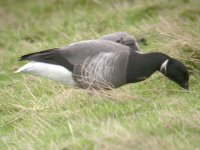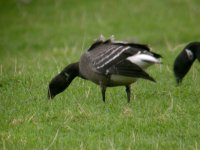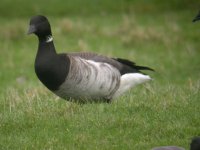Reader
Well-known member
I was in Norfolk for just over a day this week and managed to photograph some Brent Geese. Thankfully I managed to capture some Pale bellied Brents (the first I have ever seen) as well as some dark bellied Brents. Now I am no expert on Brent identification but whilst I found it relatively easy to pick out thePale bellied I found that within the Dark bellied there seemed to be variable plumages. I have attached a Pale bellied plus a couple of dark bellied Brents. can someone tell me why in one of the Dark bellied Geese it has visible wing markings whilst the other has none.
Forgive the fuzziness of the pictures but I was battling against gale force winds and these were the best out of over a hundred photos taken.
Forgive the fuzziness of the pictures but I was battling against gale force winds and these were the best out of over a hundred photos taken.








